2021 Yamaha SuperJet Review
How does the four-stroke SuperJet stand up?
The 2021 Yamaha SuperJet sees big changes, including the addition of a four-stroke engine that allows anybody to buy one.
Engine: 1,049cc Four-Stroke Triple
Fuel Capacity: 5.0 gallons
Dry Weight: 375 lbs
Capacity: 1
MSRP: $9,499
Despite the pressure of environmental regulations, Yamaha never gave up on its iconic SuperJet. The catch, of course, is that for many years the craft was available “for competition use only.” The disclaimer was an acknowledgement of the fact that the craft’s two-stroke engine technology didn’t meet modern emissions standards as well as a sales qualifier of sorts. At least technically, the SuperJet shouldn’t be on public waterways or available to the average consumer.
Why not just put a four-stroke engine in the craft like Kawasaki did when it brought back the SX-R? One of the big reasons that Yamaha refused to put a bigger, heavier four-stroke into a SuperJet was because the manufacturer refused to sacrifice the craft’s much-praised nimble, lightweight feel. In short, Yamaha wasn’t willing to be bigger and heavier.
The inevitable, however, has finally happened. And though the 2021 SuperJet is without a doubt bigger and heavier, it’s still an agile and playful craft…and best of all, available for sale to anyone who wants one.
Extreme Makeover
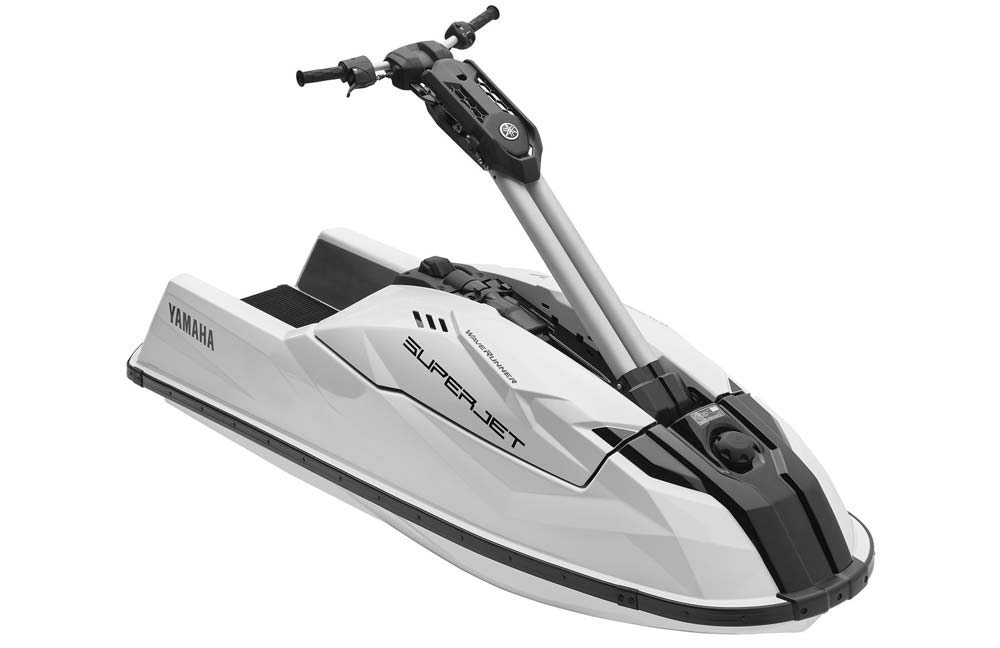
That the 2021 Yamaha SuperJet is different than its predecessor is evident the minute you set eyes on the craft. It’s, to be honest, rather bulky looking at first glance, especially toward the somewhat abrupt nose. An abundance of faceting in the deck and hood cover gives the craft an edgy style, but the relatively high profile above the bondline — along with a stark, mostly bare white paint scheme almost completely devoid of graphics — drives home the feeling that this is not the SuperJet of old.
Fortunately, it still feels somewhat like it. Yamaha’s stated goal with the new craft was to keep that original SuperJet DNA alive. That means the craft had to feel light, fun and handle with a spirited agility. Yes, like Kawasaki’s retooling of the standup Jet Ski, the 2021 Yamaha SuperJet has gotten considerably larger. By comparison it’s 7.5 inches longer, 3.2-inches wider, a full 5.0 inches taller and 69 pounds heavier than the next most-recent model. But compared to its only real competitor, the SuperJet remains the spunky little guy. The Kawi is an additional 142 pounds heavier and 8.8 inches longer. The new SuperJet may be bigger than what fans are used to, but in the brave new world of standup four-strokes, it remains the smaller of the available models by a significant margin.
Other changes in this extreme makeover? A portion of the craft’s weight savings comes via an aftermarket-influenced aluminum handlepole. Compared to the bulk of the craft’s body, the twin-tube pole is surprisingly minimalist. It’s also adjustable to fine tune the riding position, extending or shortening as much as 2 inches. An electronic fuel gauge awaits at the base. The fiberglass hull and deck are also now produced via Vacuum-Assisted Resin Transfer Assisted Molding (VaRTM), an environmentally friendly, closed-mold process.
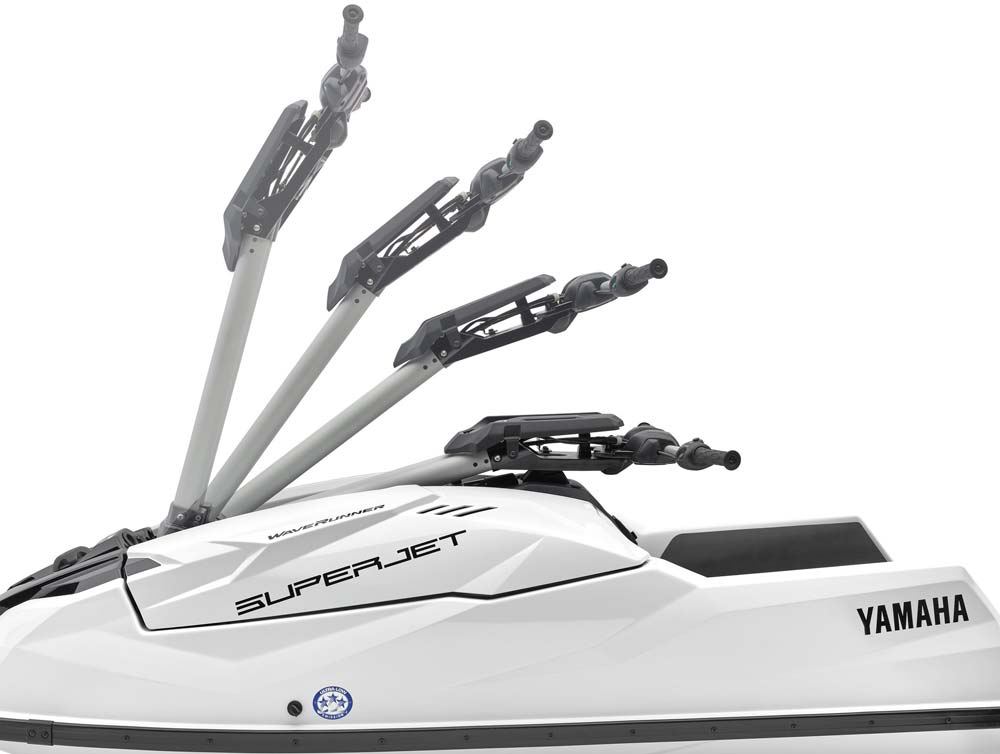
Turn, Burn…And Learn
Part of the reason for that newfound bulk of the 2021 Yamaha SuperJet, of course, is the engine. Replacing the former two-stroke is the lightweight 1,049cc triple-cylinder TR-1 four-stroke that was mildly reconfigured for the EX introduction in 2017. It’s one of the lighter, more compact four-stroke offerings on the market, yet still capable of 100-horsepower. It’s paired with the EX’s 144mm pump, fed with water through a top-loader intake grate.
Like SuperJet fans are accustomed to, that engine still has a torquey feel. Acceleration is punchy on the lower end but the powerband grows more linear en route to the craft’s 54 mph top speed. Should beginning riders wish to temper that top-end power, or experienced riders choose to just concentrate on their turning style, that top speed can be governed through the activation of the SuperJet’s L-Mode. L-Mode reduces power by about 85% on the top end, maxing the craft out at a more novice-friendly 40 mph. Limiting top speed also has the benefit of further extending the range of the craft’s five-gallon fuel supply.
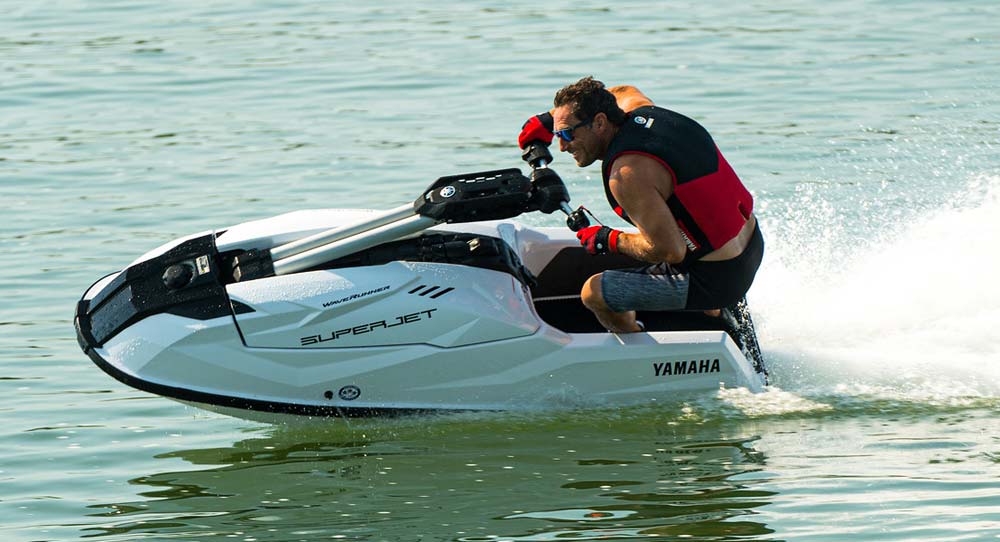
As to the handling, don’t fret. The 2021 Yamaha SuperJet, as promised, still feels quick and agile, carving into turns both via input at the handlebars and an intuitive lean. In fact, the craft handles quicker than its size would imply. Hull design plays a role. A relatively flat keel is now flanked by pronounced strakes that transition into concave pockets as the eye moves outward. Add an additional set of strakes before the chines. Aft, the ride plate features a notable upward kick that raises the bow and reportedly moves the ski’s pivot point more under the rider and encourages a forward lean. The result is both increased stability but also a quick, responsive feel when cornering. Move your weight a little more forward for best results. To that end, riders can also choose the aggressiveness of the steering response, selecting either a 16-degree or 19-degree steering cable connection.
Interestingly, while performance-minded riders will appreciate the aggressiveness, the craft’s wider stance and overall stability also make it a more beginner-friendly craft than previously. A handhold has been added to the center of the tray to make for easier boarding, but if you’re an experienced rider be wary if trying the familiar, elbows-on-the-gunwale approach. Like on the Kawasaki, they’ve been left unpadded for a sleek look but the choice offers zero traction when wet and no padding.
That Lone Competitor
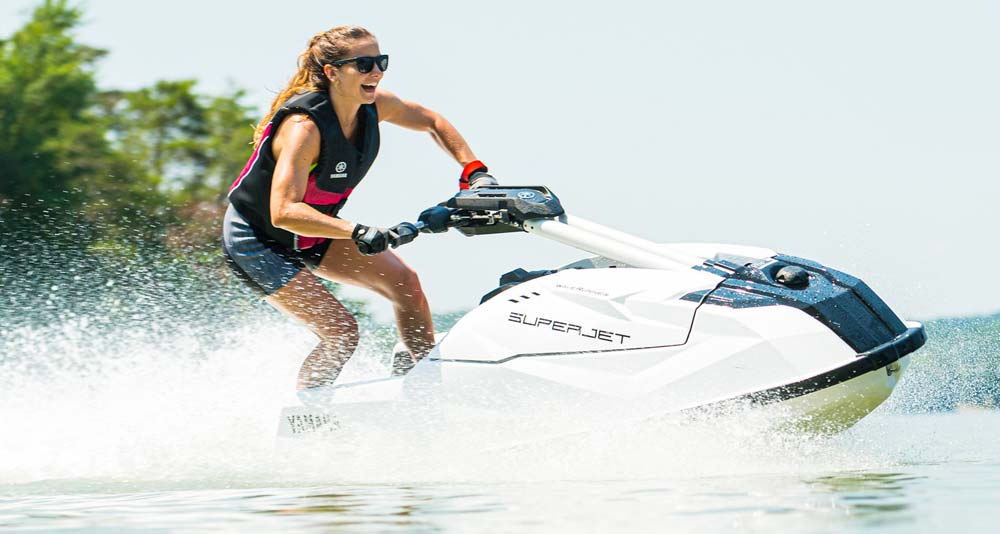
So how does the 2021 Yamaha SuperJet ($9,499) stack up against that lone competitor, the Kawasaki Jet Ski SX-R ($9,999)?
As mentioned, the Yamaha still feels more spry and agile. You can bunny hop it, launch off waves, and exert a little more body English to influence the craft. The SX-R is superior in straight-out drag runs and top speed, as well as simply railing around a buoy course. The Kawasaki’s power curve is more linear, with a smooth progression from holeshot to top speed, the Yamaha a little more “punchy” in response, especially on the lower half of the curve. Neither machine has the throw-it-in-the-back-of-the-pickup ease of early models, but the Kawasaki definitely is far bigger and heavier.
And yet in terms of looks, the bigger Kawasaki is arguably the sleeker of the two craft, the Yamaha a mix of sleek armpole and bulkier lines. Already aftermarket graphic kits have popped up to soften these lines dramatically.
Top speeds? Look for around 60 mph with the Kawasaki, about 54 mph with the Yamaha. The Kawasaki’s top speed can feel more intimidating for novice-to-average riders, however, the SuperJet’s more confidence-inspiring.
Get PersonalWatercraft.com in your Inbox!
Like PersonalWatercraft.com on Facebook
Comments
Most Popular

2025 Yamaha JetBlaster PRO 2-Up Review

2024 Kawasaki Jet Ski STX 160X Review

Remembering the Sea-Doo XP

Whatever Happened to the Wetbike?

2025 Yamaha JetBlaster Review




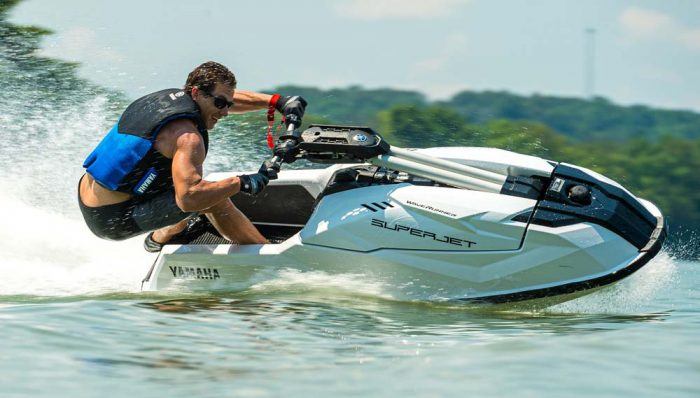

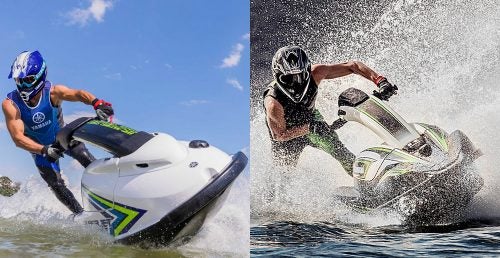







 Your Privacy Choices
Your Privacy Choices